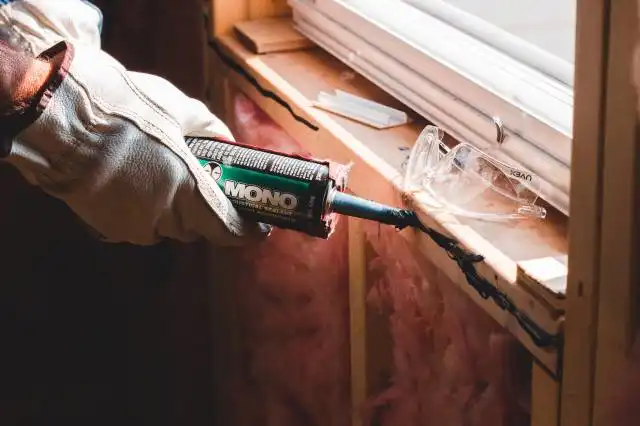Start a Quilt Shop
Stitching Dreams into Reality: The Cozy Appeal of a Quilt Shop Business
| Updated


QUILT SHOP
Starting a quilt shop could be a comfy and cozy endeavor that threads together your entrepreneurial aspirations and love for craftsmanship. Here you stitch your dreams, selling handcrafted quilts, quilt-making materials, accessories, and also hosting workshops for quilt-lovers. An endeavor like this not only offers warmth to your customers, but also quilts a community sharing the same passion. In essence, a quilt shop sells quilts and quilt-making supplies, while also serving as a learning center for this charming and historical art.
Jump to Business Plan
RELATED BUSINESS IDEAS
Browse ALL Retail & Shopping Business Ideas
Discover Your Perfect Domain
Unlock the door to your online success with our hand-picked selection of premium domain names. Whether you're starting a new venture or rebranding an existing one, the right domain can set the tone for your digital presence. Browse through our curated list, each with its unique potential to enhance your brand's visibility and credibility.
QUILT SHOP MINI BUSINESS PLAN
This a quick reality check to help you identify the strengths and weaknesses of your business concept before you dive in.
Quick Facts - Quilt Shop Business Idea
Expected Percent Margins:
- Gross Margin: 50-55%
- Net Profit Margin: 10-15%
Earnings Expectations:
- Daily Earnings: $150 - $300
- Weekly Earnings: $1,050 - $2,100
- Monthly Earnings: $4,500 - $9,000
- Annual Earnings: $54,000 -$108,000
Actions to Achieve These Numbers:
Inventory Management:
- Initial Investment: Approximately $10,000-$15,000 for quality inventory.
- Supplier Relationships: Find reliable fabric suppliers, preferably specializing in high-quality quilting fabric.
Marketing and Customer Acquisition:
- Social Media: Regular posting (at least 3 times a week) on Pinterest and Instagram to showcase quilt designs.
- Workshops: Organize monthly quilting workshops or clubs for customer engagement and learning.
Sales and Customer Experience:
- Staffing: Consider hiring staff knowledgeable in quilting for better customer service.
- Craft Shows: Participate in local craft shows or festivals to reach more prospective customers.
Cost Control:
- Rent: Select a location with affordable rent (<10% of expected monthly sales).
- Utilities and Maintenance: Estimate a monthly budget for utilities to be around $200-$400.
Business Operations:
- Operating Hours: Consider operating 6 days a week, 7-8 hours a day.
- Transaction Volume: Aim for an average of 10-15 transactions per day with an average sale price in the range of $35-$70.
Please note that these figures are approximations and can vary based on the specific location, size of the shop, types of quilts sold, and other factors. Business plans should be adjusted as per the local competition, target audience, and current market trends.
NOT WHAT YOU HAD IN MIND? Here are more ideas



Browse ALL Retail & Shopping Business Ideas
Grab Your Business Website Name
Before you get caught up in the whirlwind of setting up your business, invest in a domain name. It's a small but significant step that lays the foundation for your brand and makes it easier for customers to find and trust you. Just like you wouldn't build a house without securing the land first, don't build a business without securing your domain name.
"Why? Can't that wait?" Here's why it shouldn't
Step 1: Determine if the Business is Right for You
Breakdown of startup expenses
Before starting a quilt shop, it is important to have a thorough understanding of the startup costs associated with the business. These costs may include the cost of renting a space, purchasing supplies, hiring staff, and marketing the business. It is also important to consider the cost of any necessary licenses or permits. Additionally, it is important to consider the cost of insurance, as well as any other costs associated with the business.
Breakdown of ongoing expenses
It is also important to understand the ongoing expenses associated with running a quilt shop. These expenses may include the cost of supplies, rent, utilities, and payroll. Additionally, it is important to consider the cost of marketing, advertising, and any other costs associated with running the business.
Examples of ways to make money
There are a variety of ways to make money with a quilt shop. These may include selling quilts, providing quilting classes, selling quilting supplies, and offering custom quilting services. Additionally, it is possible to make money by selling quilting patterns, hosting quilting retreats, and selling quilting-related items such as books, magazines, and fabric. It is important to consider all of these options when determining the best way to make money with a quilt shop.
Step 2: Name the Business
Choosing a name for your quilt shop is an important decision. It should be something that reflects the personality of your shop and the type of quilting you will be doing. It should also be something that is easy to remember and that will stand out from other quilt shops. When choosing a name, consider the following tips:
Consider the type of quilting you will be doing. If you are focusing on traditional quilting, you may want to choose a name that reflects that. If you are focusing on modern quilting, you may want to choose a name that reflects that.
Consider the location of your shop. If you are opening a shop in a small town, you may want to choose a name that reflects the local culture or history. If you are opening a shop in a larger city, you may want to choose a name that reflects the city's culture or history.
Consider the type of customers you will be serving. If you are targeting a specific demographic, you may want to choose a name that reflects that. If you are targeting a wide range of customers, you may want to choose a name that is more general.
Consider the type of products you will be selling. If you are selling handmade quilts, you may want to choose a name that reflects that. If you are selling quilting supplies, you may want to choose a name that reflects that.
Consider the length of the name. You want to choose a name that is easy to remember and that is not too long. You also want to make sure that the name is not already taken by another quilt shop.
Step 3: Obtain Licenses and Permits
In order to start a quilt shop, it is important to obtain the necessary licenses and permits. Depending on the location, the type of license and permits needed may vary. Generally, a business license and a seller’s permit are required. Additionally, a zoning permit may be necessary to ensure that the business is in compliance with local laws. It is also important to check with the local health department to make sure that the business meets all safety requirements.
How to obtain the licenses and permits
The process of obtaining the necessary licenses and permits can be done online or in person. Depending on the state, the application process may be different. Generally, the business owner will need to fill out an application and submit it with the required documents. These documents may include proof of identity, proof of address, and proof of business registration. Once the application is submitted, the business owner will receive the licenses and permits in the mail.
Cost of licenses and permits
The cost of licenses and permits will vary depending on the location. Generally, the cost of a business license and a seller’s permit will range from $50 to $100. Additionally, the cost of a zoning permit may range from $50 to $200. It is important to research the cost of the licenses and permits before starting the business.
Step 4: Secure Financing
Securing financing is a crucial step in starting a quilt shop. There are a few different options for financing a quilt shop. One option is to use personal savings or investments. This is a great option for those who have the financial means to do so. Another option is to apply for a loan from a bank or other financial institution. This is a great option for those who need a larger amount of money to start their business. A third option is to seek out investors. This is a great option for those who have a great business plan and need additional capital to get their business off the ground.
Tips for securing financing
When applying for a loan, it is important to have a well-thought-out business plan. This will help convince the lender that the business is a sound investment. It is also important to research the different loan options available and find the one that best fits the needs of the business. Additionally, it is important to have a good credit score and a history of successful business ventures. Finally, it is important to be prepared to answer any questions the lender may have about the business.
Step 5: Find a Location
When choosing a location for a quilt shop, there are several factors to consider. First, the shop should be located in an area with a high concentration of potential customers. This could be a busy shopping center, a strip mall, or a downtown area. Second, the shop should be easily accessible, with plenty of parking and public transportation options. Third, the shop should be located in a safe area, with minimal crime and a good reputation. Finally, the shop should be in an area with reasonable rent and other costs associated with the location.
Research zoning laws
Once a potential location has been identified, it is important to research any zoning laws that may affect the shop. This includes restrictions on the type of business that can be conducted in the area, as well as any permits or licenses that may be required. It is also important to research any local ordinances that may affect the shop, such as noise restrictions or limits on signage. Additionally, it is important to make sure the shop is in compliance with all applicable fire codes and safety regulations.
Negotiate a lease
Once the zoning laws have been researched and the shop is in compliance, it is time to negotiate a lease with the landlord. This should include a detailed breakdown of the terms of the lease, including the length of the lease, the amount of rent, and any other fees or charges associated with the lease. It is also important to negotiate any additional services that may be included in the lease, such as utilities, insurance, or maintenance.
Secure financing
In order to open a quilt shop, it is important to secure financing. This could include a loan from a bank or other financial institution, or it could involve seeking out investors or other sources of capital. It is important to carefully research all financing options and to make sure that the terms of the loan or investment are favorable. Additionally, it is important to make sure that the shop has enough capital to cover all of its startup costs, as well as any ongoing expenses.
Step 6: Design the Store
When it comes to designing the store, it is important to create an inviting and comfortable atmosphere for customers. Consider the layout of the store, the colors, and the furniture. Think about how customers will move through the store and how they will interact with the products. Consider adding a few comfortable chairs or couches for customers to sit in while they browse. Additionally, think about how to best display the quilts and other products. Shelves, racks, and other display systems can be used to create an attractive and organized look.
Tips on how to use lighting
Lighting is an important part of creating the right atmosphere in the store. Consider adding a few accent lights to highlight certain areas of the store and to draw attention to certain products. Additionally, think about how to use natural light to create a warm and inviting atmosphere. Consider adding windows or skylights to let in more natural light. Additionally, think about how to use artificial lighting to create a cozy and inviting atmosphere.
Tips on how to use signage
Signage is an important part of any store, and it is especially important in a quilt shop. Consider adding signs to the entrance of the store to welcome customers and to let them know what type of store it is. Additionally, think about adding signs throughout the store to help customers find what they are looking for. Consider adding signs that highlight certain products or sales. Additionally, think about adding signs that provide information about the store and its products.
Tips on how to use decorations
Decorations can be used to create an inviting and comfortable atmosphere in the store. Consider adding a few quilted wall hangings or quilted pillows to the store. Additionally, think about adding a few plants or flowers to the store to add a touch of color and life. Consider adding a few pieces of art or other decorations to the store to give it a unique and personal touch. Additionally, think about adding a few books or magazines about quilting to the store to provide customers with more information.
Step 7: Purchase Supplies
Before purchasing supplies, it is important to make a list of all the necessary items needed to start a quilt shop. This list should include fabric, thread, batting, needles, scissors, and any other tools or materials needed to make a quilt. It is also important to consider the cost of these items and to purchase them in bulk when possible to save money. Additionally, it is important to research and find the best prices for the supplies needed.
Where to purchase supplies
When purchasing supplies, it is important to consider both online and local stores. Online stores often offer the best prices and a wider selection of items, but local stores may have better customer service and more personalized advice. Additionally, local stores may also offer discounts or special deals that can help to save money. It is important to compare prices and shop around to find the best deals.
How to store supplies
Once supplies have been purchased, it is important to store them properly. This includes keeping all items organized and in a safe place. Additionally, it is important to keep track of inventory and to make sure that all items are labeled and easy to find. It is also important to keep track of expiration dates on any items that have them, such as thread or batting.
How to budget for supplies
When budgeting for supplies, it is important to consider both the initial cost of the supplies and any ongoing costs. Additionally, it is important to consider any discounts or special deals that may be available. It is also important to set aside a portion of the budget for unexpected expenses, such as repairs or replacements. Finally, it is important to keep track of all purchases and to make sure that the budget is not exceeded.
Step 8: Market the Business
The eighth step in starting a quilt shop is to market the business. There are many ways to market a business, including traditional methods such as print advertising and radio and television spots. Additionally, digital marketing methods such as email campaigns, social media, and search engine optimization can be used to reach potential customers. It is important to research the best methods to reach the target audience and to create a budget for marketing.
Creating a website
Creating a website is a great way to market the business. A website should include information about the business, such as the type of quilts and services offered, as well as contact information. Additionally, the website should have an online store where customers can purchase quilts and other products. It is important to make sure the website is user-friendly and attractive to potential customers.
Networking
Networking is another great way to market the business. This can include attending trade shows and conferences, joining local business organizations, and connecting with other quilt shop owners. Additionally, it is important to build relationships with local businesses that may be able to refer customers to the quilt shop.
Social media
Social media is an effective way to reach potential customers. It is important to create a presence on the most popular social media platforms, such as Facebook, Twitter, and Instagram. Additionally, it is important to create content that is interesting and engaging, such as tutorials, behind-the-scenes photos, and customer testimonials.
Step 9: Open the Store
Opening a store is a big step and requires a lot of preparation. First, it is important to have a business plan that outlines the goals and objectives of the store. This plan should include the budget for the store, the target market, the location of the store, and the marketing strategy. It is also important to have a good understanding of the local laws and regulations regarding the opening of a store. Additionally, it is important to have a good understanding of the local competition and the services they offer. Finally, it is important to have a good understanding of the customer base and their needs.
Tips on how to promote the store
Once the store is open, it is important to promote it. This can be done through a variety of methods including online advertising, social media, and traditional advertising. Additionally, it is important to have a good understanding of the local market and the customers that will be visiting the store. It is also important to have a good understanding of the local competition and the services they offer. Additionally, it is important to have a good understanding of the customer base and their needs. Finally, it is important to have a good understanding of the local laws and regulations regarding the promotion of the store.
EXPLORE MORE CATEGORIES
Browse ALL Business Idea Categories
TAKE THE NEXT STEPS










